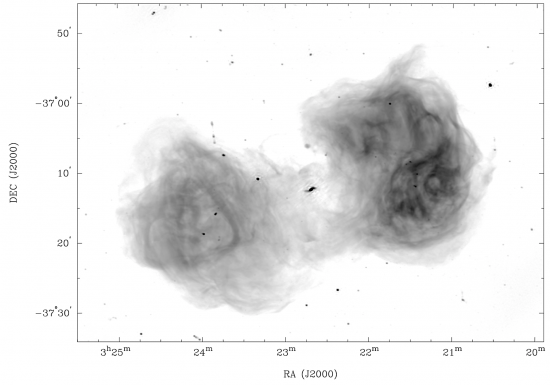
July 17, 2020
A new class of celestial object?
Many astrophysical phenomena are “puzzling” to astronomers, Fast Radio Bursts (FRB), Gamma-Ray Bursts (GRB), blazars, magnetars, black holes, etc. Now, some new mysterious observations are beckoning: ORCS, or Odd Radio Circles.
None of the other previously discovered radio objects seem able to explain them. For example, if the ORCs are supernova remnants, then the Galaxy is home to more than 50 times the number that are expected. Interestingly, the researchers, themselves, most likely provided the clue to what they are witnessing:
“It is also possible that the ORCs represent a new category of a known phenomenon, such as the jets of a radio galaxy or blazar when seen end-on, down the “barrel” of the jet.”
Edge-brightening in the ORCs is the clue to what is happening: bipolar outflow from a dark detection. Those associated with the observations are hitting as close to the mark as any conventional scientists can come without acknowledging electricity in space. There are no radio galaxies or blazars nearby to account for the energetic emissions, so they are moving toward a “new class” of object. In an Electric Universe, however, such phenomena are expected.
Plasma physicist Hannes Alfvén wrote:
“The earth, the sun and many stars possess general magnetic fields. It is possible that interstellar clouds are magnetized, that spiral arms have regular magnetic fields, and that galaxies also have general magnetic fields. Even if the views of different authors are still conflicting, it seems reasonably certain that interstellar matter is usually magnetized.”
In plasma physics, a well-known method of accelerating and confining charged particles is the dense plasma focus, or DPP. DPPs are able to confine charged particles and then accelerate them to relativistic velocities using electromagnetic fields. A DPP is currently under development as a tool for nuclear fusion energy production.
One of the signature phenomena in a dense plasma focus is the helical strands of energy that surround a powerfully radiating arc-mode discharge and a dark-current torus. The strands are helical magnetic fields that confine plasma and act like power lines in space – Birkeland current filaments, in other words. That phenomenon is most likely present In the plasma gun discharge that makes up the ORCs.
As more detailed observations progress, it may be that there are 28 filamentary strands (or 56, or 49 or some other number discussed by Alfvén) in the penumbral cloud energized by the gun – the exact number is difficult to determine in the images that are available. It will be difficult to resolve them because they are “head-on” to the telescopes.
Stephen Smith
The Thunderbolts Picture of the Day is generously supported by the Mainwaring Archive Foundation.












